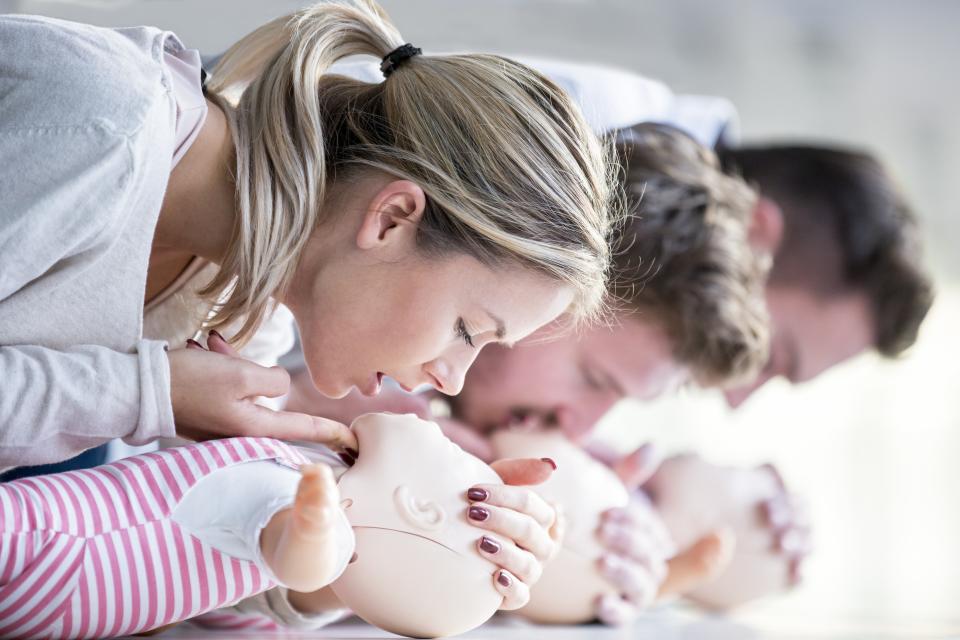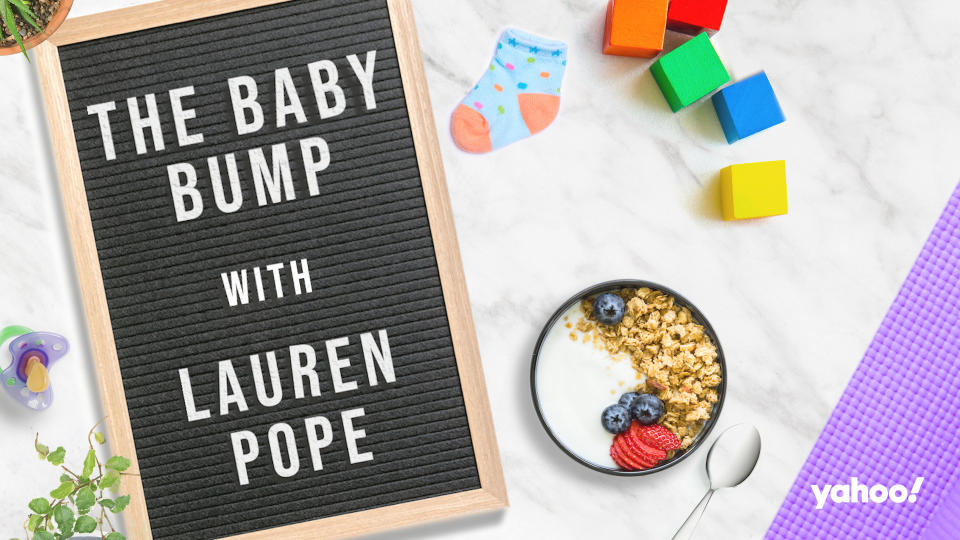How to help a choking baby, according to a paediatric first aid expert
Undertaking a first aid course is highly recommended for both parents-to-be and new parents. But, the coronavirus pandemic and subsequent lockdown has left access to these courses limited.
Knowing what to do when a child chokes is a particularly useful skill. No matter how careful you are, children aged one to five often put small objects in their mouths and so knowing how to help your child - and when to call an ambulance - is key.
Michelle Murray, paediatric first aid trainer at Daisy First Aid talks about the difference between gagging and choking in babies and how to know what to do if these occur.
Speaking to Lauren Pope on Yahoo UK’s The Baby Bump with Lauren Pope, Murray talked new parents - including 35 weeks pregnant Pope - through what they’ll need to do if this scenario occurs.
Read more: Why dance classes could help parents bond with children
Murray explains: “There are a couple of things about choking and the first is to recognise the difference between gagging and choking.
“Babies have a very sensitive gag reflex and it’s built in to protect them from objects going in.
“If a baby is gagging, they will flush red, their eyes will water and they can make noise. The main difference with choking is that they may initially flash red but then go blueish and they’ll be silent.”
When introducing foods to your baby, Murray explains that it’s ok to let them gag a bit, because it’s their way of learning.
Choking, on the other hand, is different.
“Choking in a blocked airway, so it’s very different to gagging, which is touching an area on their tongue which is sensitive.”

Read more: Experts explain coronavirus hospital rules
In this situation, Murray recommends looking to see where the item lodged in the throat is because you may be able to reach it with your hands.
“If you ever feel like you need to dig (to get it) then don’t.
“If you are able to, place the baby face down on your arm and lean them down slightly. Hold onto their face, but not pulling their chin up or pulling it down. You would then apply force on the baby’s back.”
Murray admits that some parents are worried that you should just tap the baby’s back, but it needs to be hard.
What you’re looking for is a big outburst of breath.
“Add some gravity, tilt them a bit but not all the way down and firmly hit them with the heel of your hand in between the shoulder blades because you want them to cough.”
“Do that up to five times. The worst thing you can do to the back is make it go a bit red, but if you don’t get the object out the situation could be a lot worse.”
The NHS has more advice for helping a choking baby.





